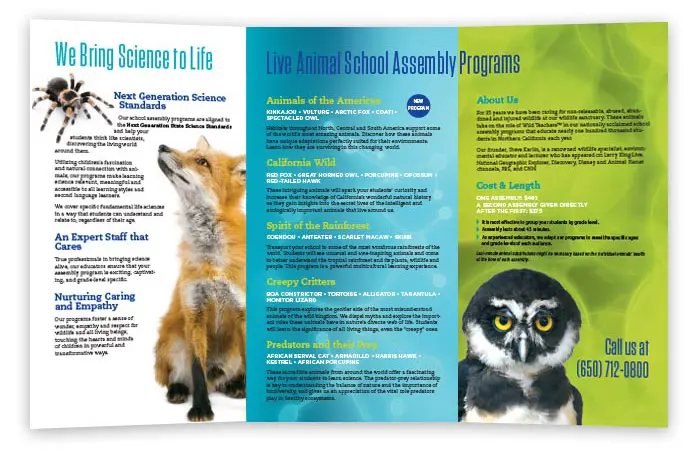Direct Mail Fundraising Best Practices

Best Practice #1: Segment Your Donor Audience
The following is true for any Direct Mail campaign, but especially true for all non-profit marketing campaigns: segment your donor audience! By segmenting your donor base into different subcategories, you can easily create fundraising messages that make sense for each specific group. You can tailor your communication by demographics such as age, geographical location, household income, etc. Another way to segment your audience is by donor status (active or dormant), average donation amount, last donation date, donation channel preference (online, phone, physical check), etc.
As you can see there are different ways in which you can segment your donor audience. The important thing is to look at your database and determine what subcategories make sense for your specific needs and fundraising goals. Segmentation enables you to create relevant messaging for improved response.
Best Practice #2: Personalize Your Message
People who enjoy supporting a cause will appreciate the extra mile an organization takes to ensure the communication efforts are tailored to them, personally. A simple first name greeting goes a long way. If you have previous donation information (based on your segmentation efforts!), you can acknowledge this by simply including a “thank you for your previous donation” message in your fundraising appeal. Creating a bond between you and the donor is key, because you’re not the only non-profit out there soliciting money, items, time, services, etc. from the same group of people.
Understanding segmentation and personalization are just two elements to what makes a good fundraising Direct Mail campaign. But we’re not done yet. Next, we need to focus on frequency and deliverability.
Best Practice #3: Control the Frequency

We suggest creating a program schedule for each fundraising campaign. The schedule should pinpoint when each medium will be deployed and what message, or call-to-action, will be used. It’s important to stay consistent with copy as well as design across all channels within a specific campaign; there needs to be a singular, common goal that each medium is trying to reach.
The frequency of your marketing efforts need to strike a delicate balance. Often times, too much of a good thing turns bad quickly. And the opposite? Well, that becomes too little, too late – and fast! So, what’s the answer? Know your audience and keep a steady marketing stream flowing throughout the year. For Direct Mail specifically, we suggest to reach out to your donor base no more than once per quarter; update them on a fundraising goal, share a successful milestone, celebrate a mission accomplished, ask for a donation, etc. Whatever your message is, make sure they know that nothing would be possible without their generous support. When it comes to non-profit fundraising success, a lot has to do with retention. People who have given in the past are more likely to give in the future.
When people ask us questions like “How do you follow up with donors?” and “How do you build trust with donors?” or “How do you write a fundraising reminder?” we point to the above advise. Know your segments, personalize your message, and keep a steady communication frequency. If all of this is in place, knowing what to say will come much easier. And remember, when it comes to fundraising reminders and follow-ups, keep it simple, friendly, and similar to that of your original message.
Best Practice #4: Keep Your Communication Strategy Honest and Open
Now that you’re ready to communicate to your subgroups, keep your language and message in your Direct Mail consistent with that on your website and social media channels. Asking for donations should come easily now that you know who you are writing to. Be clear as to why your organization needs donors to step up and support your mission. Are you fundraising for a specific cause? Do you have a matching donor program that will come to an end soon? Are you in need of specific items? Whatever the reason is, make it clear and make it easy for donors to send what you’re looking for.
On the other hand, if you’re sending an update to your donor base let them know in detail what you have accomplished based on their past donations. It’s equally important for donors to see that their support is put to good use, as it is knowing you need their funding.
Benchmarks and Direct Mail Fundraising Examples
There are some Direct Mail fundraising benchmarks and statistics that you should be aware of, and you can find them here. Pay close attention to the information regarding Millennials and Gen X in the consumer behavior section. According to research done by Epsilon, these two groups spend a combined 679.5 billion annually. Learn more about generational spending habits by visiting MarketingCharts.
An interesting fact on MarketingCharts shows that the younger generation, Gen Z (born 1997-2012), have most transactions per year. And we know from our Gen Z webinar that this generation is very aware of where they are spending their money. A cause-related purchase is much more attractive to Gen Z compared to those who fall in older generations. For non-profits, this is an important statistic to keep in mind. In fact, we recommend looking at your database to create a Gen Z subgroup!
Next, we will focus on examples of non-profit direct mail and specific calls-to-action (CTA). When writing copy for your nonprofit organization:
- Keep the paragraphs in your direct mail piece short and concise
- Include bullet points if applicable
- Use high-resolution images and vibrant colors to your advantage in order to stand out in the mail
- The CTA should be easy to spot and your contact information prominently displayed

- Join us!
- Make a donation today!
- Every donation makes a difference. Please give today!
- Please send items to the following address:
- Support a child/an animal/a senior in need!
- Help us save [insert cause here] by donating today!
- Support our mission! Sign up / Give today.
If you have questions about what CTA phrase to use, or how to craft your message to best suit your non-profit’s needs, let’s get in touch! Creating Direct Mail for your non-profit is an important piece in your marketing outreach and we’re here to help every step of the way. Modern Postcard supports every aspect of a Direct Mail program, from lists, design and copywriting to shipping, mailing and tracking.
Let’s start a conversation! Give our Direct Marketing Consultants a call at 800.959.8365

